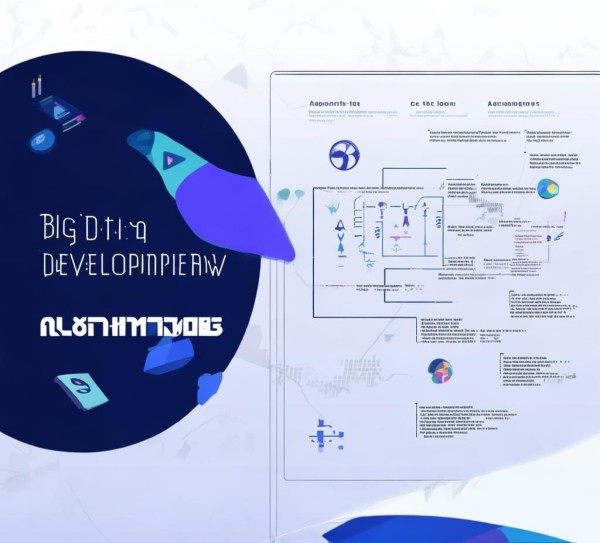大数据开发面试算法指南,掌握核心技术,轻松应对挑战
云云大数据开发2025-09-26阅读(604)
这是一本专为大数据开发领域设计的面试算法指南。书中详细介绍了大数据处理的核心技术和常用工具,如Hadoop、Spark等,并提供了大量的编程练习和面试真题解析。通过本书的学习,读者可以系统地掌握大数据开发的技能,提高解决实际问题的能力,为未来的职业发展打下坚实的基础。

目录
1、基础算法
2、图论算法
3、动态规划
4、并行与分布式算法
一、大数据开发面试算法的重要性
在大数据开发的面试过程中,算法题占据了相当大的比重,这是因为大数据处理往往涉及到大量的数据处理和计算,因此对算法的要求非常高,通过算法题的考察,雇主可以了解应聘者的编程能力、逻辑思维能力和解决问题的能力,算法题还能帮助雇主判断应聘者是否具备快速学习和适应新技术的能力。
1. 基础算法
基础算法是大数据分析的基础,主要包括排序算法(如快速排序、归并排序)、搜索算法(如二分查找)等,这些算法在数据处理中经常被使用,因此掌握它们对于大数据开发来说是非常重要的。
例题:快速排序
def quick_sort(arr):
if len(arr) <= 1:
return arr
pivot = arr[len(arr) // 2]
left = [x for x in arr if x < pivot]
middle = [x for x in arr if x == pivot]
right = [x for x in arr if x > pivot]
return quick_sort(left) + middle + quick_sort(right)2. 图论算法
图论算法在大数据处理中也常常用到,例如最短路径算法(Dijkstra算法)、最小生成树算法(Prim算法)等,这些算法可以帮助优化网络流量、资源分配等问题。
例题:Dijkstra算法
import heapq
def dijkstra(graph, start):
distances = {node: float('infinity') for node in graph}
distances[start] = 0
pq = [(0, start)]
while pq:
current_distance, current_node = heapq.heappop(pq)
if current_distance > distances[current_node]:
continue
for neighbor, weight in graph[current_node].items():
distance = current_distance + weight
if distance < distances[neighbor]:
distances[neighbor] = distance
heapq.heappush(pq, (distance, neighbor))
return distances3. 动态规划
动态规划是一种解决复杂问题的有效方法,它可以将问题分解为子问题,并通过存储已解决的子问题的结果来避免重复计算,这在大数据分析中非常有用,比如最长公共子序列(LCS)问题、背包问题等。
例题:最长公共子序列(LCS)
def lcs(X, Y):
m = len(X)
n = len(Y)
L = [[None]*(n+1) for i in range(m+1)]
for i in range(m+1):
for j in range(n+1):
if i == 0 or j == 0 :
L[i][j] = 0
elif X[i-1] == Y[j-1]:
L[i][j] = L[i-1][j-1]+1
else:
L[i][j] = max(L[i-1][j], L[i][j-1])
index = L[m][n]
lcs = [""] * (index+1)
lcs[index] = ""
i = m
j = n
while i != 0 and j != 0:
if X[i-1] == Y[j-1]:
lcs[index-1] = X[i-1]
i -= 1
j -= 1
index -= 1
elif L[i-1][j] > L[i][j-1]:
i -= 1
else:
j -= 1
return "".join(lcs)4. 并行与分布式算法
在大数据环境中,数据的规模通常非常大,传统的串行算法无法满足需求,并行与分布式算法成为大数据处理的必然选择,常见的有MapReduce、Spark Streaming等框架。
例题:MapReduce示例
假设我们要统计一个文本文件中的单词频率,可以使用MapReduce来实现:
public class WordCountMapper extends Mapper<LongWritable, Text, Text, IntWritable> {
private final static IntWritable one = new IntWritable(1);
private Text word = new Text();
public void map(LongWritable key, Text value, Context context) throws IOException, InterruptedException {
String[] words = value.toString().split("\s+");
for (String s : words) {
word.set(s);
context.write(word, one);
}
}
}
public class WordCountReducer extends Reducer<Text, IntWritable, Text, IntWritable> {
private IntWritable result = new IntWritable();
}便是大数据开发面试算法的主要内容及其重要性
热门标签: #大数据开发 #面试算法


